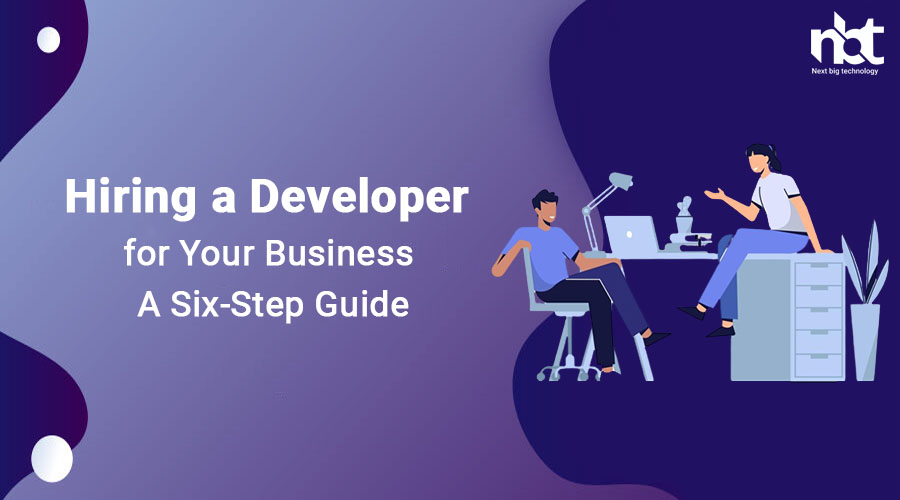Introduction: In today’s digital age, hiring skilled developers is crucial for businesses looking to leverage technology to drive growth and innovation. However, finding the right developer for your business can be a challenging task. In this comprehensive guide, we will walk you through a six-step process to help you successfully hire a developer who aligns with your business goals, technical requirements, and company culture.
- Define Your Requirements: Before beginning the hiring process, it’s essential to clearly define your requirements for the developer role. Consider the following aspects: a. Technical Skills: Identify the specific programming languages, frameworks, and tools required for the role based on your project needs. b. Experience Level: Determine the desired level of experience, whether you need a junior developer, mid-level developer, or senior developer, based on the complexity of your projects. c. Project Understanding: Assess whether the developer needs to have domain-specific knowledge or experience working on similar projects to understand the specific challenges and requirements of your business. d. Soft Skills: Consider the soft skills necessary for success in your organization, such as communication skills, teamwork, problem-solving abilities, and adaptability.
- Craft a Compelling Job Description: A well-crafted job description attracts top talent and helps potential candidates understand the role and responsibilities. Ensure your job description includes the following elements: a. Company Overview: Provide an overview of your business, its mission, and its core values to give candidates a sense of your company culture. b. Role Description: Clearly outline the responsibilities, required skills, and qualifications for the developer role, including specific technologies or frameworks they will be working with. c. Project Details: Highlight the key projects or initiatives the developer will be involved in and any opportunities for growth or learning. d. Compensation and Benefits: Clearly state the compensation package, including salary range, benefits, and any additional perks your organization offers.
- Source Candidates: To attract top developer talent, consider utilizing the following sourcing methods: a. Online Job Boards: Post your job opening on popular job boards and developer communities, such as LinkedIn, Indeed, Stack Overflow, or GitHub Jobs. b. Referrals: Tap into your professional network and encourage current employees or colleagues to refer qualified candidates who may be a good fit for the role. c. Developer Communities: Engage with developer communities, attend tech meetups or conferences, and leverage platforms like GitHub to connect with talented developers. d. Freelance Platforms: Consider hiring freelancers or contractors from platforms like Upwork or Freelancer for short-term or project-specific roles.
- Screen and Interview Candidates: Once you have a pool of candidates, it’s important to effectively screen and interview them to assess their technical skills and fit for your organization. Consider the following steps: a. Resume Review: Review resumes and assess candidates’ relevant experience, technical skills, and educational background. b. Technical Assessments: Conduct technical assessments, coding challenges, or assignments to evaluate candidates’ programming proficiency and problem-solving abilities. c. Technical Interviews: Conduct technical interviews to delve deeper into candidates’ technical knowledge, experience, and ability to apply their skills to real-world scenarios. d. Cultural Fit Interviews: Assess candidates’ cultural fit by conducting behavioral interviews to gauge their alignment with your company values, work ethic, and team dynamics.
- Evaluate and Make an Offer: Once you have interviewed the candidates, evaluate their performance and assess their fit for your organization. Consider the following factors: a. Technical Proficiency: Evaluate candidates’ technical skills, ability to solve problems, and their potential for growth within your organization. b. Cultural Fit: Assess how well candidates align with your company culture, values, and work environment. c. Communication and Collaboration: Consider candidates’ communication skills and their ability to collaborate effectively with other team members. d. References: Conduct reference checks to validate candidates’ qualifications, work experience, and their performance in previous roles.
- Onboard and Support: After making an offer and successfully hiring a developer, it’s crucial to provide a smooth onboarding process and ongoing support to set them up for success: a. Onboarding: Develop an onboarding plan to familiarize the new developer with your organization’s policies, processes, and tools. Assign a mentor or buddy to provide guidance and support during the initial stages. b. Continuous Learning: Encourage continuous learning and professional development by providing access to training resources, workshops, conferences, and opportunities to explore new technologies. c. Feedback and Performance Reviews: Conduct regular performance reviews and provide constructive feedback to help developers improve their skills and achieve their career goals. d. Team Collaboration: Foster a collaborative environment where developers can collaborate with other team members, share knowledge, and contribute to the overall success of the projects.
Conclusion: Hiring a skilled developer is a critical step in leveraging technology to drive your business forward. By following this six-step guide, you can streamline the hiring process and find a developer who not only possesses the technical skills required for the role but also aligns with your company culture and values. Remember to define your requirements, craft a compelling job description, source candidates effectively, screen and interview candidates thoroughly, evaluate their fit, and provide ongoing support for their success. With the right developer on board, your business can innovate, build cutting-edge solutions, and achieve its technological goals.










